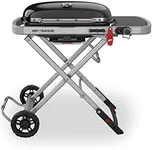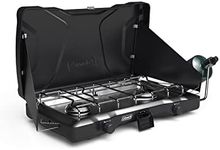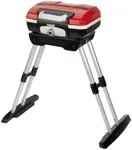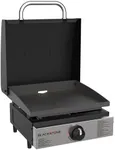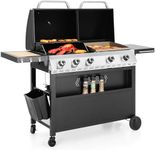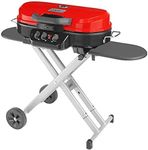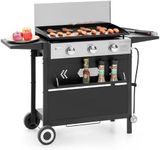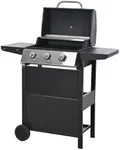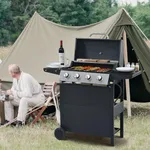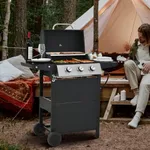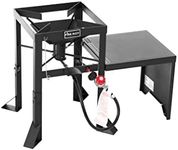Buying Guide for the Best Propane Portable Grills
Choosing the right propane portable grill can significantly enhance your outdoor cooking experience. Whether you're planning a camping trip, a tailgate party, or just a backyard barbecue, the right grill can make all the difference. When selecting a propane portable grill, it's important to consider several key specifications to ensure you get the best fit for your needs. Here are the most important specs to consider and how to navigate them.Size and Cooking AreaThe size and cooking area of a propane portable grill determine how much food you can cook at once. This is important because it affects how many people you can serve at one time. Small grills with a cooking area of around 150-200 square inches are suitable for 2-4 people, making them ideal for small gatherings or camping trips. Medium-sized grills with 200-400 square inches can handle 4-6 people, perfect for family outings. Larger grills with over 400 square inches are great for larger groups or tailgate parties. Choose a size based on the number of people you typically cook for and the portability you need.
BTU RatingBTU (British Thermal Units) rating measures the heat output of the grill. This is important because it affects how quickly and evenly your food will cook. A higher BTU rating means more heat, which can be beneficial for searing meats and cooking food faster. For small grills, a BTU rating of 5,000-10,000 is usually sufficient. Medium grills may have 10,000-20,000 BTUs, while larger grills can go above 20,000 BTUs. Consider your cooking style: if you prefer high-heat cooking or grilling thick cuts of meat, opt for a higher BTU rating. For more casual grilling, a lower BTU rating will suffice.
PortabilityPortability is a key factor for a propane portable grill, as it determines how easy it is to transport and set up. This is important for convenience, especially if you plan to move the grill frequently. Lightweight grills (under 20 pounds) are easy to carry and ideal for camping or picnics. Medium-weight grills (20-40 pounds) offer a balance between portability and cooking capacity, suitable for tailgating or small backyard gatherings. Heavier grills (over 40 pounds) may have more features but can be cumbersome to move. Choose a grill that matches your mobility needs and the frequency of your outdoor activities.
Build Quality and MaterialsThe build quality and materials of a grill affect its durability and performance. This is important because a well-built grill will last longer and provide better cooking results. Stainless steel and cast iron are common materials that offer good heat retention and resistance to rust. Aluminum is lightweight and resistant to corrosion but may not retain heat as well. Look for grills with sturdy construction, solid hinges, and durable grates. If you plan to use the grill frequently or in harsh conditions, invest in a model with high-quality materials to ensure longevity and reliability.
Ignition SystemThe ignition system of a propane portable grill determines how easily you can start the grill. This is important for convenience and safety. Most grills come with either a push-button ignition or a rotary ignition. Push-button ignitions are simple and reliable, requiring just a single press to ignite the burners. Rotary ignitions involve turning a knob, which can offer more control but may be slightly more complex. Choose an ignition system that you find easy to use and reliable, especially if you plan to grill frequently or in varying weather conditions.
Temperature ControlTemperature control is crucial for achieving the desired cooking results. This is important because it allows you to cook different types of food at the right temperature. Grills with adjustable burners and multiple heat zones offer better control, enabling you to cook various foods simultaneously. Basic models may have a single burner with limited control, suitable for simple grilling tasks. More advanced models with multiple burners and precise controls are ideal for those who enjoy experimenting with different cooking techniques. Consider your cooking style and the types of food you plan to grill when evaluating temperature control features.
Additional FeaturesAdditional features can enhance your grilling experience by providing extra convenience and functionality. This is important for making your cooking process more enjoyable and efficient. Features like side tables, built-in thermometers, warming racks, and storage compartments can add value to your grill. Side tables provide extra workspace, built-in thermometers help monitor cooking temperatures, warming racks keep food warm, and storage compartments offer space for utensils and accessories. Think about which features will be most useful for your cooking style and outdoor activities, and choose a grill that includes those enhancements.

